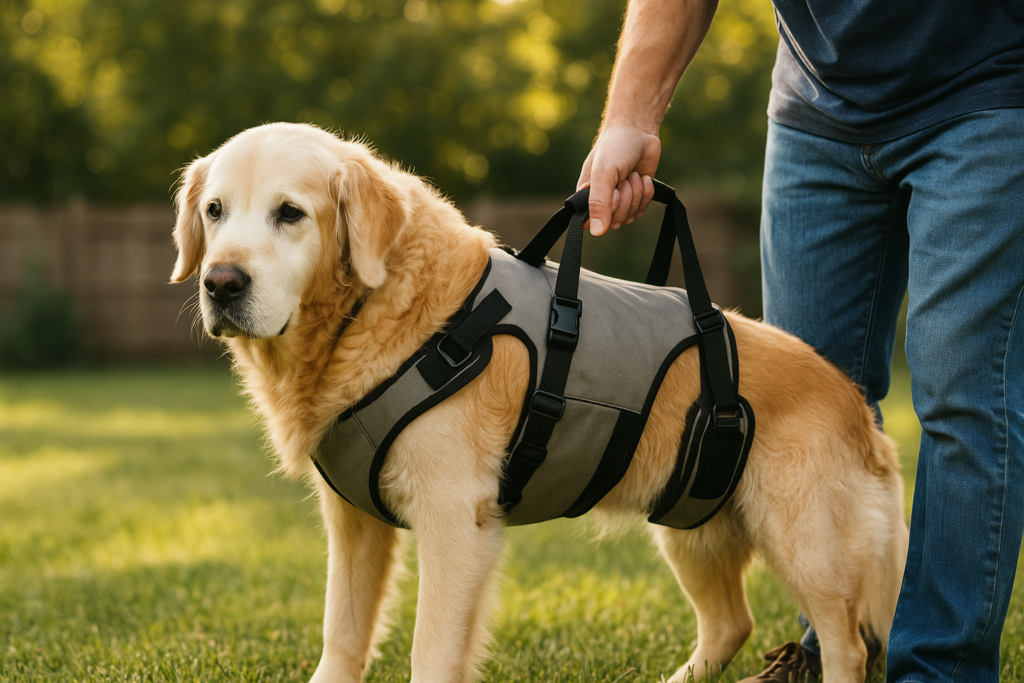Helping Your Senior Dog With Mobility Issues: Practical Solutions That Work

As dogs age, mobility issues often become one of the most noticeable—and heartbreaking—signs of aging. What was once a simple leap onto the couch or a playful sprint across the yard can become painful or even impossible for a senior dog. Mobility decline in older dogs is common, but that doesn’t mean it’s untreatable. With the right strategies and tools, you can help your dog stay active, independent, and comfortable well into their senior years. In this article, we’ll explore the causes of mobility issues, signs to look out for, and a variety of ways to support and manage your aging dog’s movement. Common Causes of Mobility Problems in Senior Dogs Understanding what’s behind your dog’s decreased mobility helps you treat the root cause—not just the symptoms. The most frequent reasons include: 1. Arthritis (Osteoarthritis) A degenerative joint disease that leads to inflammation, stiffness, and pain. Extremely common in older dogs. 2. Hip Dysplasia A genetic condition where the hip joint doesn’t fit properly, worsening over time and causing pain or lameness. 3. Intervertebral Disc Disease (IVDD) Common in long-bodied dogs (like Dachshunds), this affects the spinal discs, causing back pain, nerve issues, and sometimes paralysis. 4. Muscle Atrophy Loss of muscle mass due to inactivity or aging can weaken a dog’s body, making movement harder. 5. Neurological Disorders Conditions like degenerative myelopathy affect the spinal cord and can lead to uncoordinated movement or paralysis. 6. Obesity Excess weight puts more strain on joints and muscles, worsening pain and accelerating deterioration. Signs Your Dog Is Struggling With Mobility Some signs are obvious, while others are more subtle. Keep an eye out for: Any of these signs warrant a vet visit for proper diagnosis and to begin a treatment plan. Veterinary Diagnosis and Evaluation Before you can help your dog move better, a proper diagnosis is crucial. Your vet may use: Depending on the findings, your dog may be referred to a veterinary neurologist or orthopedic specialist. Home Adjustments to Support Mobility 1. Add Ramps and Steps Avoid forcing your dog to jump or climb. Use: Make sure ramps have a non-slip surface and a gentle incline. 2. Use Non-Slip Flooring Falls are dangerous for dogs with poor balance. Cover slippery areas with: Also, trim your dog’s nails and paw fur to improve traction. 3. Rearrange Living Spaces Keep your dog’s essentials on one floor and avoid clutter. Set up: Minimize the need for stairs or jumping entirely. Mobility Aids That Help 1. Harnesses and Slings Supportive harnesses allow you to assist your dog when walking or getting up. Look for: These aids reduce strain and give your dog more confidence. 2. Dog Wheelchairs For dogs with partial or full paralysis, wheelchairs can restore freedom of movement. Choose the right size and type with professional help. They can be life-changing for dogs with: 3. Orthopedic Braces or Wraps Joint braces stabilize knees, hocks, or elbows and reduce pain during movement. Some are custom-made; others are off-the-shelf. Consult a vet or canine rehab specialist for correct fitting. 4. Heated Beds or Heating Pads Warmth helps soothe stiff joints and muscles. Choose low-voltage, dog-safe heating pads and supervise use to avoid burns. Lifestyle and Routine Adjustments 1. Gentle Exercise Complete rest isn’t the solution—movement prevents muscle loss and boosts circulation. Safe options include: 2. Weight Management If your dog is overweight, even a few pounds can increase joint stress. Ask your vet about a senior-specific diet plan to reduce weight safely. 3. Massage and Passive Range-of-Motion Exercises Canine massage helps relieve tension and improve circulation. Passive exercises involve gently stretching your dog’s legs to preserve flexibility. Always learn techniques from a certified pet therapist or vet. 4. Environmental Enrichment Mental health matters too. If your dog is less mobile, use puzzle toys, scent games, and food-dispensing toys to keep them stimulated and engaged. Medications and Supplements Common Medications: Never self-medicate—only use prescriptions provided by your veterinarian. Supplements: It can take several weeks to see results from supplements, so be patient and consistent. Physical Therapy and Rehab Options Working with a canine physical therapist offers personalized treatments such as: These services are increasingly available in veterinary clinics and rehab centers and can significantly improve your dog’s mobility and quality of life. When to Consider Euthanasia This is the most difficult decision a pet owner may face. Mobility issues, when severe and untreatable, can impact: Use a Quality of Life scale (such as the HHHHHMM scale: Hurt, Hunger, Hydration, Hygiene, Happiness, Mobility, and More good days than bad) to guide your decision with your vet. But until that time comes, many dogs live months or years longer with the right support. Final Thoughts: Keep Them Moving, Keep Them Happy Watching your dog struggle to walk, climb, or play can be heartbreaking. But you don’t have to stand by helplessly. Mobility loss isn’t the end—it’s a change. And with your commitment, care, and patience, your senior dog can continue to explore, enjoy, and share beautiful moments with you each day. Every step they take is one you can take together.

